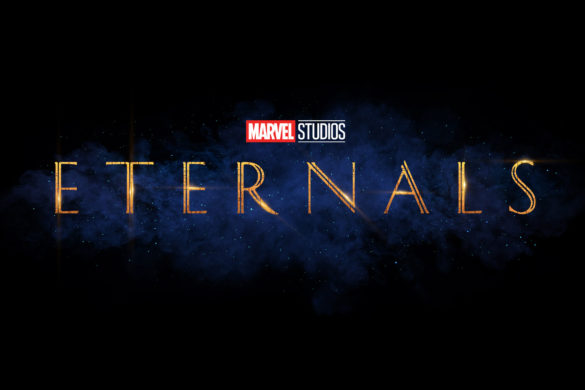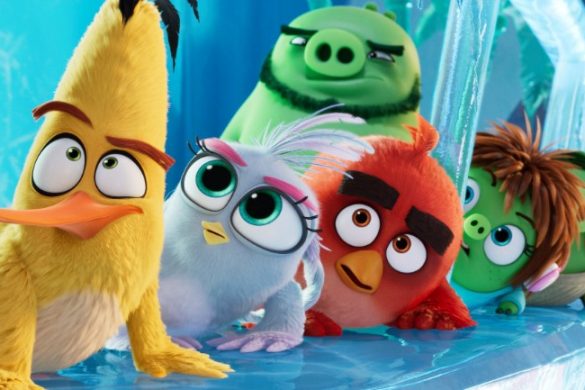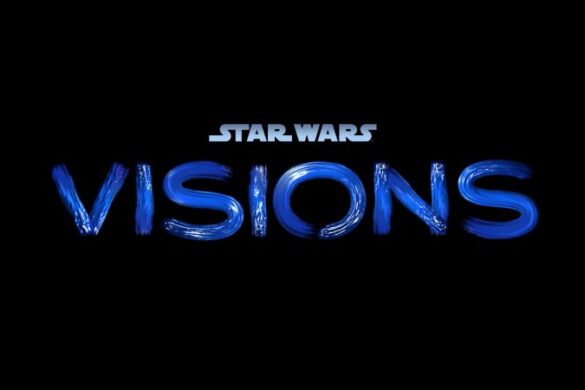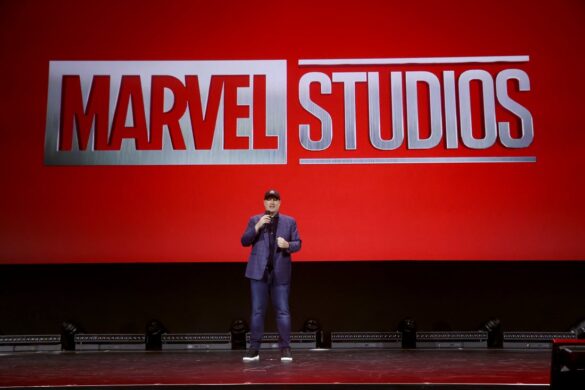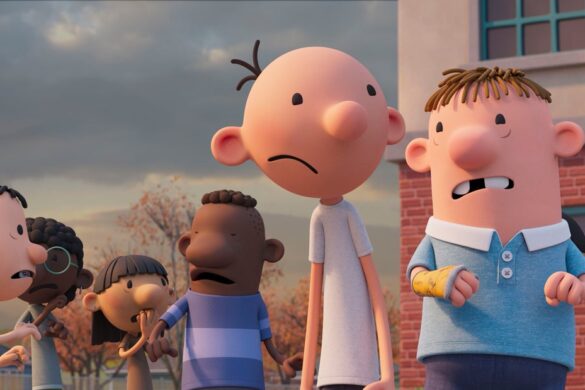Though Deborah Chow was a well-established TV director, having helmed episodes for “Better Call Saul” and “American Gods,” she made a big splash with “The Mandalorian” Chapters 3 and 7. Her episodes were so well-received that she eventually got the offer to direct the six-episode limited series “Obi-Wan Kenobi.” Set 10 years after the events of “The Revenge of the Sith,” “Obi-Wan Kenobi” follows the exiled Jedi who protects a young Luke Skywalker from the Galactic Empire.
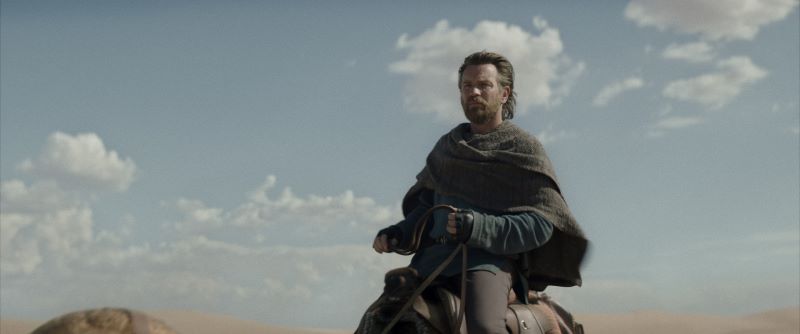
While directing individual episodes of a hit season was thrilling, the one thing that excited Chow the most was being able to dive into the character’s mythology for an entire series. “I was really excited at the idea of getting to do a limited series, just because you get to tell sort of a bigger story, but you also have the time to get into the character,” she said. “So I think first and foremost, I was the most excited about doing a character-driven story and kind of having the opportunity to get more depth and have more time to get to know the character.”
“I think I was the most excited about getting the opportunity to do a character-driven story, you know, in a similar way. Obviously has a different tone, but something like Joker or Logan, where you know, you take one character out of a big franchise, but then you have the time, and you go a lot deeper with the characters,” Chow continued. “That, to me, seemed exciting to get to do in Star Wars.”
Part of diving into the character’s latest arc was seeing how the events post “Revenge of the Sith” impacted Obi-Wan. Of course, that meant looking at the relationship between Obi-Wan and his former student turned archrival Anikan Skywalker, aka Darth Vader. “When we were developing the material, and we were looking at the character of Obi-Wan and looking at what was important in his life? What are the relationships that were meaningful,” Chow asked. “The history coming out of ‘Revenge of the Sith’ is so strong and powerful. It felt like for us that there’d be so much weight coming into the story that was connected to Anakin/Vader. So, I think it just felt natural that obviously there would be Hayden, and we would continue this relationship in this series.”
And so much has changed between the two characters since they went their separate ways – in Anakin’s case, that’s quite literal. But from a production standpoint, the technology has changed as well. So, Chow was excited to revisit the Volume in creative new ways that she could do on “Obi-Wan Kenobi” that she couldn’t do on “The Mandalorian.” “I started using that technology, Stagecraft on ‘Mandalorian.’ So I was actually incredibly excited to be able to use it on ‘Kenobi’ as well. I think one of the interesting things is in the first season of ‘The Mandalorian,’ a lot of the tech. It’s advanced so much,” she said. “So every passing year, there’s advances, so by the time we came to do Kenobi, there were things that we could do that we couldn’t do on the first season.”
But revisiting the technology wasn’t the only thing that excited Chow. It was the fact that she could take her vision and translate it on screen. “It was also really exciting to be able to design and to develop material knowing that I was going to shoot Stagecraft,” she said. “So, a lot of times, I’d be looking at the scene even as we were writing it, thinking about how is this going to translate into the Volume? And how can we take advantage of the tech as best as possible?”
And shooting at the Volume was an entirely new experience for Ewan McGregor, who reprises his role as Obi-Wan Kenobi. For six years, he played as the Jedi against a giant blue screen instead of the revolutionary video wall used today. “I’ve never worked on the Stagecraft set before. There’s such a game-changer for us. The experience of the first three, especially Episodes II and III, there’s so much blue screen and green screen,” McGregor said. “And it’s just hard. It’s very hard to make something believable when there’s nothing there, you know. And here, we were in this amazing set where, you know, if you’re shooting in the desert, everywhere you look at the desert, and if you’re flying through space, then you know, the stars are flying past you.”
The new technology gave a sense of tangibility on set, but it also ended up bettering the fight scenes that fans will see in the film. “The fight scenes are always something extra when you’re doing something like this because they require such a lot of preparation. And there’s a sort of room nervousness,” he said. “When you walk on set to do a fight that you’ve been learning and training for, for months, your stomach gets really nervous because you want to do it the best you can. And sometimes, you’re shooting for two to three days in a row. And it requires an enormous amount of stamina, which is also why getting fit beforehand was really important because so we could maintain that.”
Of course, getting fit for the role is essential, but the cast couldn’t help themselves from getting into the world of Star Wars. For McGregor, he found himself so deep that he started to make the sounds of the lightsaber igniting.
“Is it possible not to? And if you’re not making them, then you’re doing it in your head? I think,” McGregor said.
Chow then revealed that they did play a lot of John Williams music while on set and that there was a big reason for that decision. “There was a big reason we did it because the music brings the emotional component,” she said. “And what John Williams has done has been so inextricably tied to Star Wars. So, you know, we put it on us, and I see Moses go like two inches taller. And you know, everybody responds to it.”
While Williams’ signature Star Wars battle themes helped the cast get into their characters’ mindset, there was an added effect for actor Moses Ingram, who plays Inquisitor Reva. “That was sick too. Because we’d be like, stepping off the ship or like, you know, doing something else in the musical as well. You just like, feel like you’re 10 feet tall,” she said.
But filming a limited series about one of the most beloved and iconic Star Wars characters would be a huge challenge for Chow, especially since it covers a particular point within the timeline in the Skywalker Saga. “I would say that was definitely one of the biggest challenges with the series is that obviously, we have these huge legacy iconic characters. And we’re in between two trilogies,” she said. “So in large part, you know, we’re telling the second act of a story, which is often challenging enough.”
Chow also acknowledged the significance of the limited series’ place within the timeline. So much so that she wanted to respect it but also do something new. “So I think, you know, the biggest thing we were looking for is to respect the canon and respect what’s been done, but we also needed to have an original story and, you know, have an original vision for it,” she said. “I think that was the biggest challenge, but at the same time, it was very exciting that we were bringing back two of these huge iconic characters and telling a new story with them.”
As for Chow’s favorite Star Wars show or movie, the director said “Rogue One: A Star Wars Story.” “I was really looking a lot at like the atmospheric sense in that in the in a lot of the visuals in that which was, you know, pretty awesome,” she said.
The first two episodes of “Obi-Wan Kenobi” debuts exclusively on Disney+ on May 27, 2022.
More Obi-Wan Kenobi news here.

